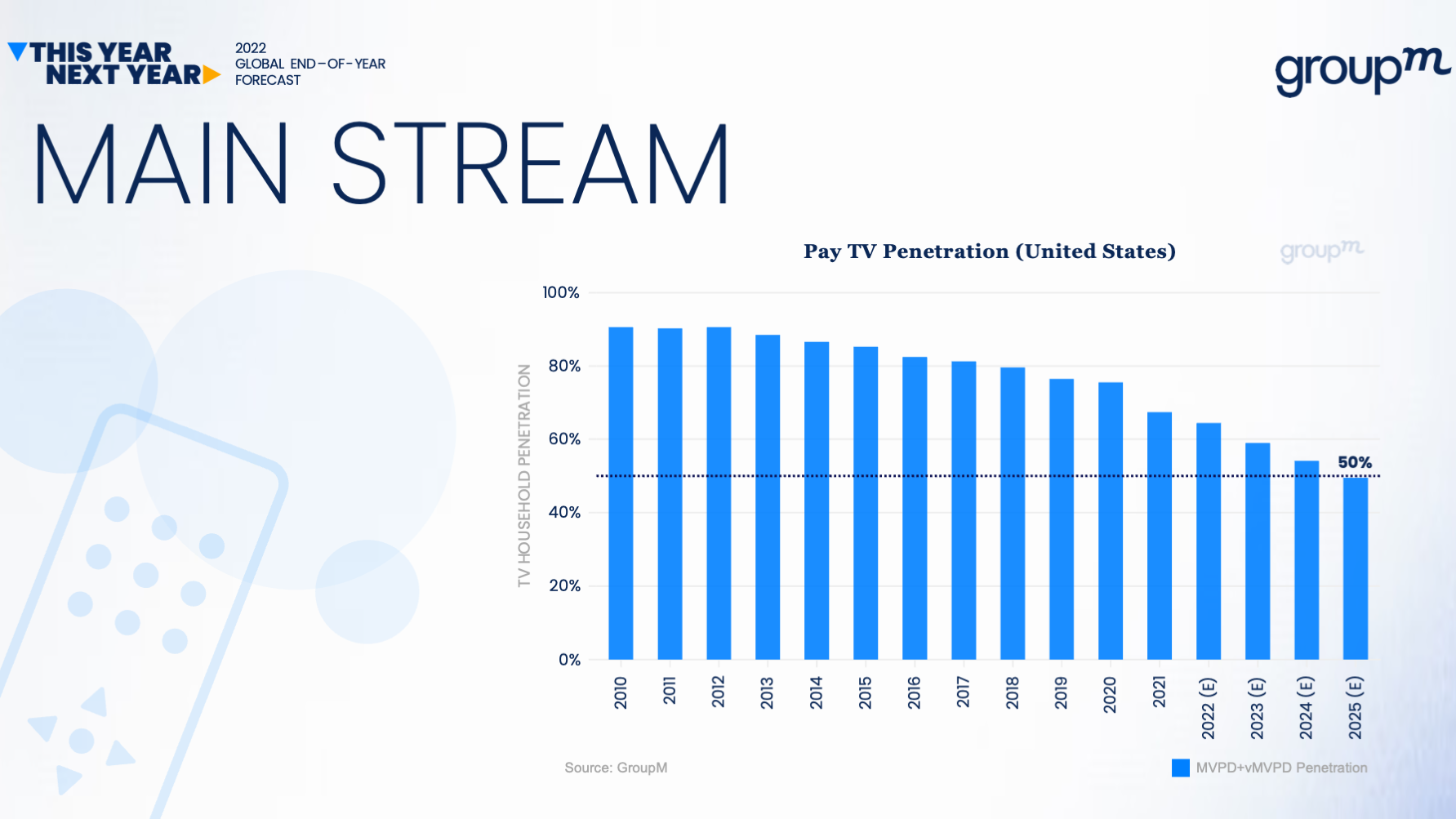GroupM Sees Pay TV Reaching Less than 50% of U.S. Homes By 2025
Connected TV to make up nearly a third of all TV advertising by 2027

Giant media buyer GroupM forecasts that traditional pay TV will reach less than 50% of U.S. homes by 2025.
Cord-cutting has been growing since 2012, when pay TV penetration was over 90%. Advertisers have been slower than consumers to shift away from traditional media because advertisers prefer to place their brand message next to higher-quality, professionally produced content.
But ad dollars will follow consumer eyeballs. “Currently we expect connected TV to grow double-digits over the next four years and make up nearly a third of all TV advertising revenue by 2027,” Group M said in its year-end global advertising forecast.
Also Read: U.S. Pay TV Penetration Retreats to Pre-Satellite Level 61%
“You’re seeing that brands and advertisers need to expand their definition of professionally produced video in order to meet their reach goals,” GroupM global director, business intelligence Kate Scott-Dawkins said.
Historically, GroupM noted, large brands with big TV budgets account for most TV advertising. But in its report, the media buyer wonders what happens if it becomes impossible to reach a majority of the population with television-based campaigns?
GroupM notes that those conditional already exist in China, where linear TV reach is down to 46%.
Broadcasting & Cable Newsletter
The smarter way to stay on top of broadcasting and cable industry. Sign up below
“The solution for many marketers in the near term is mixed reach — activating and measuring campaigns across not only linear and connected TV but also online video and OOH video inventory,” the report said.

A similar situation could develop in other countries, GroupM notes.
“In the U.S., in the closing months of 2022, streaming providers have claimed virtually all the most-watched TV programs other than live sports, which is still dominated by linear networks and cable channels,” GroupM said. “But as Apple, Amazon and other nontraditional players enter the market for sports rights, even this last bastion of linear viewership won't be guaranteed. Sports alone certainly haven’t been enough to stem the losses of video customers from cable and satellite providers.”
Increasing streaming services are adding viewing share by jacking up how much they spend on content.
“While we note that Amazon, Comcast, Disney, Netflix, Paramount and Warner Bros. Discovery each spent upwards of $12 billion in 2021 on content, the current economic environment has resulted in some additional focus on profitability in the near term, which could constrain content spending growth on streaming services,” GroupM said. “Hence it is unclear how the pace of streaming content investment will continue, but we do believe it will continue to grow over time.” ■
Jon has been business editor of Broadcasting+Cable since 2010. He focuses on revenue-generating activities, including advertising and distribution, as well as executive intrigue and merger and acquisition activity. Just about any story is fair game, if a dollar sign can make its way into the article. Before B+C, Jon covered the industry for TVWeek, Cable World, Electronic Media, Advertising Age and The New York Post. A native New Yorker, Jon is hiding in plain sight in the suburbs of Chicago.

